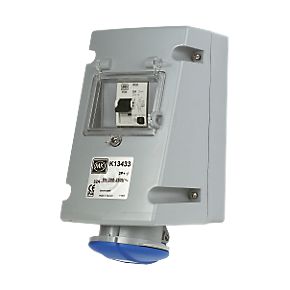Hi,
I have a query regarding 16A 230v commando sockets.
I have been told these cannot be on a ring, and must be wired individualy as a radial from their own 16A MCB or RCBO. is this correct?
I am hoping to have two of these fitted adjacent to each other to supply power for a pair of immersion heater elements, which draw too much curent to go on a 13a socket. they need to be able to be unplugged, so using a FCU isn't an option.
I have a query regarding 16A 230v commando sockets.
I have been told these cannot be on a ring, and must be wired individualy as a radial from their own 16A MCB or RCBO. is this correct?
I am hoping to have two of these fitted adjacent to each other to supply power for a pair of immersion heater elements, which draw too much curent to go on a 13a socket. they need to be able to be unplugged, so using a FCU isn't an option.


